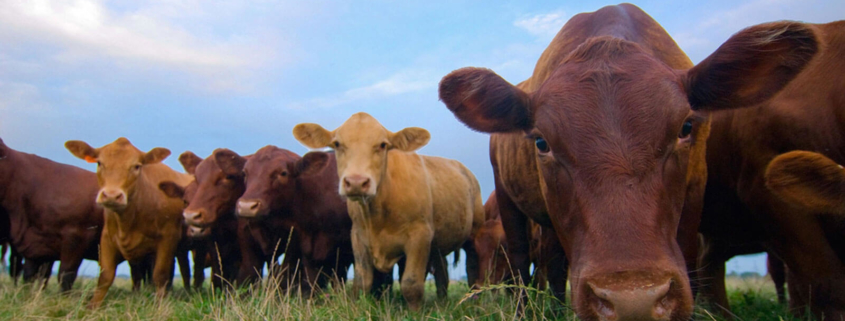Texas Ranches Manage Cattle to Improve Habitat and Watershed Health
Author: Terrie Wade
Few animals get as bad a rap these days as cattle do. They are blamed for soil erosion, water depletion, overgrazed rangelands, greenhouse gas emissions, and, when eaten, human heart disease. Often missing from such indictments of the mooing, tail-wagging, and, yes, methane-emitting bovine, however, is our role. How we choose to manage cattle determines their environmental impact, not the animals themselves.
“Ninety percent of people think cattle are bad,” said Robert Potts, president of the Texas-based Dixon Water Foundation. “But grasslands need well-managed grazing to stay healthy. We need to educate people about that.”
Potts is on a mission to do that educating, as well as to advance grazing techniques that will benefit both the watersheds of Texas and the bottom lines of ranchers. The foundation operates seven working cattle ranches, four in North Texas and three in West Texas. The Mimms ranch spans 11,000 acres (4,450 hectares) in the northeastern corner of the Chihuahuan desert, a gorgeous landscape of high-elevation grasslands surrounded by rocky volcanic mountains. Rainfall averages about 15 inches (380 millimeters) a year, but can swing wildly from one year to the next, a pattern of extremes climate change is likely to amplify.
Potts views improvements in soil health as crucial to building climate resilience. “It matters less how much rain you get and more how much rain you keep,” he said.
At the Mimms ranch, Potts and his ranch managers are running both an economic enterprise and a scientific experiment. They’ve divided the land into three parts: one where cattle graze continuously to replicate how most Texas ranchers operate; another where no grazing is done in order to demonstrate what happens when the land simply rests; and a third that’s dedicated to rotational grazing, or what Potts prefers to call high-intensity, short-duration grazing.
Casey Wade, vice president of ranching operations for Dixon Water Foundation, maintains a detailed plan of how many animals will be grazing in which locations based on the amount of grass available and its rate of growth. The plan is never set in stone, however, because adaptation is a core principle of managed grazing. As rainfall, forage availability, and other conditions change, Wade adjusts the plan. It sounds laborious—and it is—but the goal is to boost profitability by growing more grass, rejuvenating lands previously overgrazed, and raising more cattle per acre.
“Bare ground is really the enemy,” Potts said. “If you have one-third bare ground, your ranch is one-third smaller.”
Currently, the Mimms ranch supports 200 “animal units” (roughly equal to 133 cow–calf pairs) of purebred Hereford and red Angus. Most of the cattle raised for sale graze for 24–28 months and are then sold to the Grassfed Livestock Alliance, which in turn supplies beef to Whole Foods Markets throughout Texas.
While cattle raised on irrigated pasture get the prized “grass-fed” label as well, those raised on natural rangeland under holistic management techniques offer a suite of other potential benefits. As we tour the Mimms ranch, I learn that the land is alive with birds—quail, western meadowlarks, kestrels, vesper sparrows, and savannah sparrows, to name a few. The ranch’s 270 different species of grasses and plants create a rich variety of habitats for birds and wildlife.

